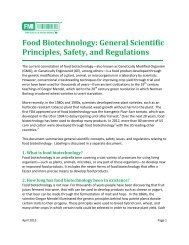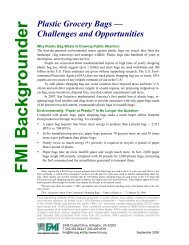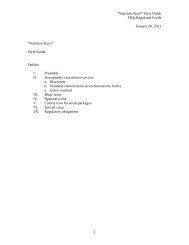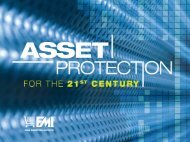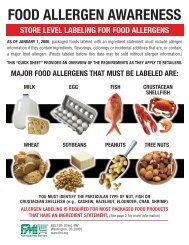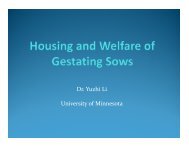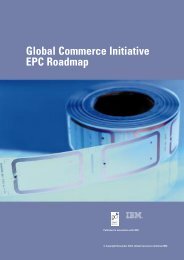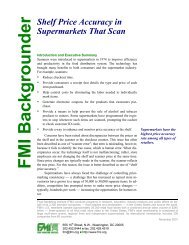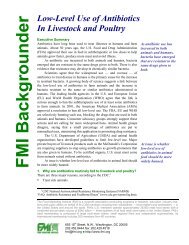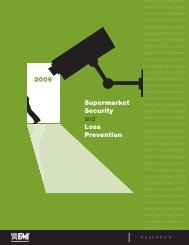Consumer Shopping Habits for Wellness and Environmentally ...
Consumer Shopping Habits for Wellness and Environmentally ...
Consumer Shopping Habits for Wellness and Environmentally ...
You also want an ePaper? Increase the reach of your titles
YUMPU automatically turns print PDFs into web optimized ePapers that Google loves.
Non-food pet supplies have very little relationship to H+W. While some Core consumers will avoid<br />
man-made objects such as rubbery chew-toys, such pet-enthused Core consumers are, again,<br />
somewhat rare. We do find some experimenting with flushable <strong>and</strong>/or more natural <strong>for</strong>ms of kitty<br />
litter, but at the same time, we have not found many sticking with such products.<br />
Purchase Criteria<br />
When consumers are interested in more natural options, they do tend to move toward human grade<br />
foods <strong>and</strong>, to some degree, organic ingredients in pet foods, avoiding ―fillers‖ (e.g. anything with<br />
―meal‖ in its name). However, <strong>for</strong> the vast majority of the population, pet food is purchased largely<br />
based on price <strong>and</strong> whether the pet will eat the food. Purchases tend to be highly habitual due to<br />
such pet preferences (―he eats it <strong>and</strong> I‘m sticking with it‖).<br />
In non-food pet items that are not purchased often, price declines as an overriding priority <strong>for</strong> many,<br />
<strong>and</strong> purchases are largely based on demonstrated pet preferences. Pet preferences also drive nonfood<br />
items that are frequently purchased such as kitty litter, though there is of course more a price<br />
focus here given the repetitive nature of purchases.<br />
With most other products examined until now, effectiveness is top of mind as the most important<br />
purchase factor other than price. For pet food however, it is the purity or healthiness of the product<br />
that is the most important factor (45%), though this is likely augmented by fairly recent pet foods<br />
―scares‖ (e.g. Chinese-manufactured pet foods with toxic ingredients). The Core consumer<br />
especially feels stronger about the purity <strong>and</strong> healthiness of pet food compared to the other<br />
segments. The Core also is more likely to view supporting socially responsible companies <strong>and</strong> the<br />
environmental impact of the product as more important than the other segments.<br />
Figure 93 – Most Important Purchase Factors Other Than Price<br />
Purity or healthiness of something that goes in or on<br />
the body<br />
45%<br />
Effectiveness (works well, etc.)<br />
41%<br />
Availability (I can find it easily where I shop)<br />
40%<br />
Ease of use<br />
14%<br />
Lack of irritants (skin, eye, lung, etc.)<br />
Supporting companies/br<strong>and</strong>s that have good practices<br />
(such as doing business fairly <strong>and</strong> treating workers<br />
well)<br />
Environmental impact of the product<br />
8%<br />
4%<br />
13%<br />
Q32: “When you buy Pet supplies, what are the most important factors OTHER than price/value? Please check your top TWO<br />
choices” | Base: Pet supplies shoppers (n=341). | Source: GMDC 2009 Survey, Mar. 2009.<br />
106




